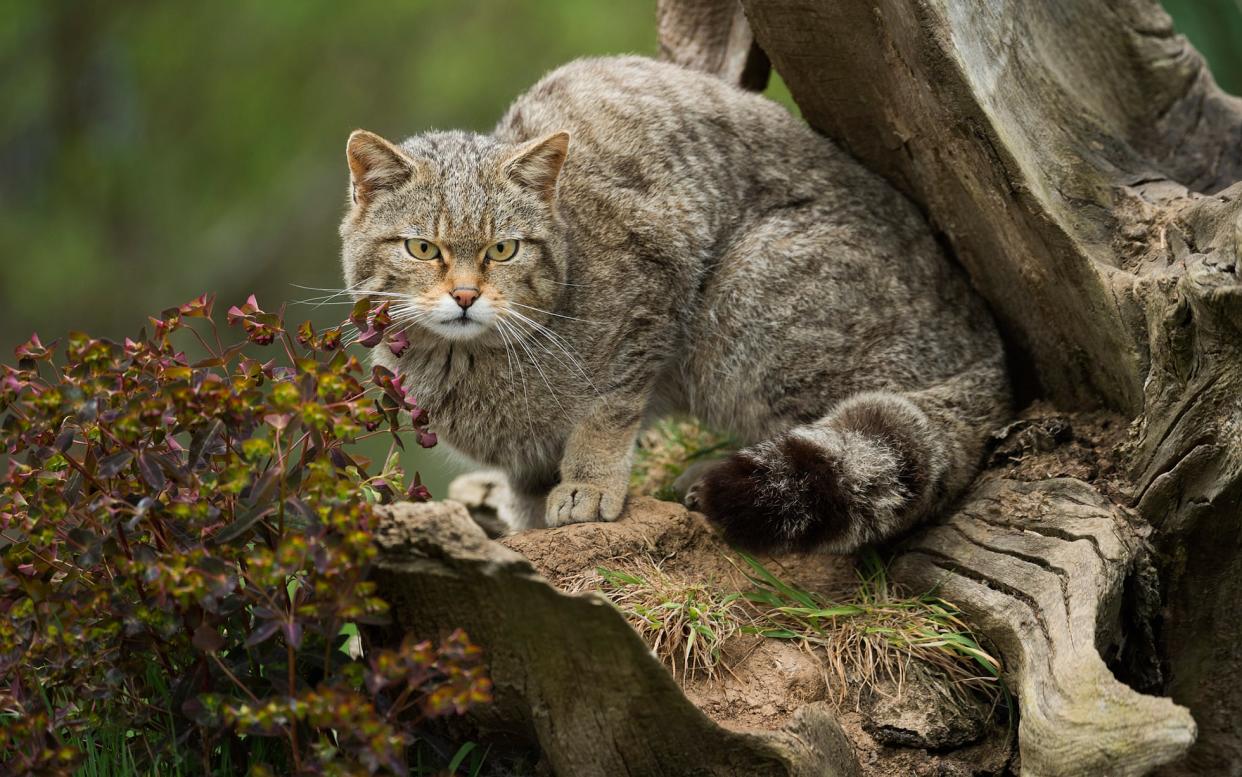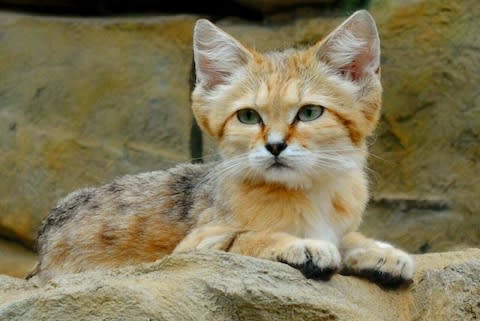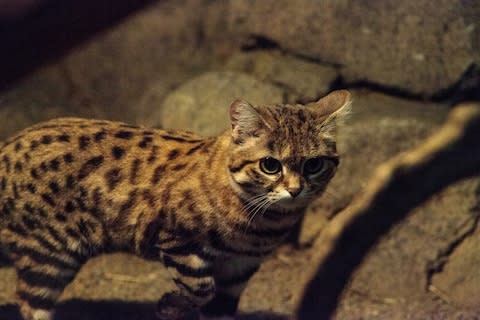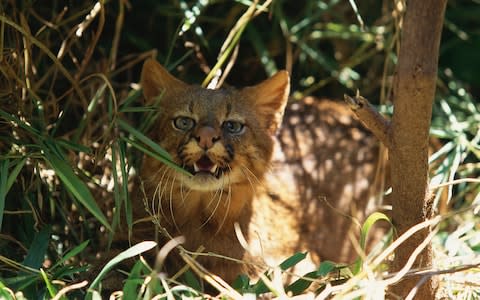Five beautiful and lesser-known feline species, following the discovery of the 'cat-fox'

Scientists believe they have identified a new species of cat living on the French island of Corsica, and wildlife enthusiasts are rather excited about it.
Dubbed the 'cat-fox' by locals, thanks to its size, colour and voluptuous tail, the reclusive felines have been spotted in the past but until now never formally examined and identified as distinct from domestic cats, or indeed any other species we know of.
Nocturnal, with wide ears and highly developed canine teeth, there are thought to be only 16 in existence, all found in Corsica's Asco forest, but with new interest in the discovery, there are calls to have the species protected.
It measures around 90 centimetres (35 inches) from head to tail, with stripes on the front legs, very dark hind legs and a russet stomach, and its dense, silky coat is a natural repellent for fleas, ticks and lice.
The National Hunting and Wildlife Office (ONCFS) says it hopes to have this cat "recognised and protected" within two to four years. It is thought their history could stretch back to 6500 BC, when they may have been introduced to the island by Corsica's first farmers, who arrived from the Middle East.

Inspired by the discovery, we're tracked down five more lesser-known feline species.
The Scottish wildcat
A subspecies of the European wildcat that was once widespread throughout England and Wales, the Scottish wildcat is now only native to Scotland.
It is the only wild feline left in Britain and almost became extinct in the 19th century after being routinely trapped and shot by groundskeepers to protect game birds. It was given protected status under the Wildlife and Countryside Act in 1981.

Less than 40 are thought to remain in the wild in Britain, and the subspecies is still in danger of dying out because they often breed with feral domesticated cats, creating hybrids.
Last July, however, the rare cat received an unexpected population boost after two orphaned kittens were discovered in Scotland. Conservation group Wildcat Haven rescued the dehydrated youngsters and eventually plans to release them back into the wild.
The sand cat
This feline is one of the smallest wild cats in the world, and the only subspecies to live primarily in the desert. A solitary creature, it is found across North Africa and the Middle East, and while once was classified by the IUCN Red List as being 'Near Threatened' in 2002, its numbers have since bounced back.

The sand cat's most distinct feature are the extra-large ears it has developed to help keep cool in the arid environment it prowls. Interestingly, they meow like domestic cats but also bark like dogs. They're also fast, reaching speeds of up to 25mph, and excellent diggers that burrow into the sand to find prey.
Sadly, like many of the world's most exotic creatures, sand cats have fallen victim to their own exqusisite beauty and are captured from the wild to be sold illegally as pets. Not that they make good ones, being both hostile towards humans and difficult to care for.
The black-footed cat
You might be surprised to learn that of all cats big and small, this species is one of the deadliest, capable of catching more prey in a single night than a leopard does in six months – and weighing only about as much as a lion's paw.

Endemic to southern Africa, they are currently listed as 'vulnerable' by the IUCN, owing to hunting and loss of habitat. Like most wild cats, this species is nocturnal and highly evasive, and thus rarely spotted. No pun intended.
The Pampas cat
This unusual looking subspecies is found along the western coast of South America, in grasslands and high-elevation forests, and has been deemed 'near threatened' by the IUCN.

Pampas cats are killed largely by local people striving to protect domestic poultry, of which they are a natural predator. However, other populations across Argentina, Bolivia and Peru consider them a sacred symbol of fertility, and believe that it is bad luck to harm them.
Iberian lynx
This fine beast, about twice the size of its domestic cousin, is the only cat species to be listed by the IUCN as 'critically endangered'. They live not too far away in Spain, in the wilds of Andalucia – a short drive from the holiday beaches of the Costa del Sol.
In living memory they still roamed widely across Iberia, but by 2001 only 90 remained. Had they become extinct they would have been the first cat species to be lost since the sabre-toothed tiger 10,000 years ago.

Today, thanks to a hugely successful captive-breeding programme, numbers have risen to nearly 500, most of them confined to the Andujar Natural Park, which Telegraph Travel's Brian Jackman visited last year.
Inspiration for your inbox
Sign up to Telegraph Travel's new weekly newsletter for the latest features, advice, competitions, exclusive deals and comment.


